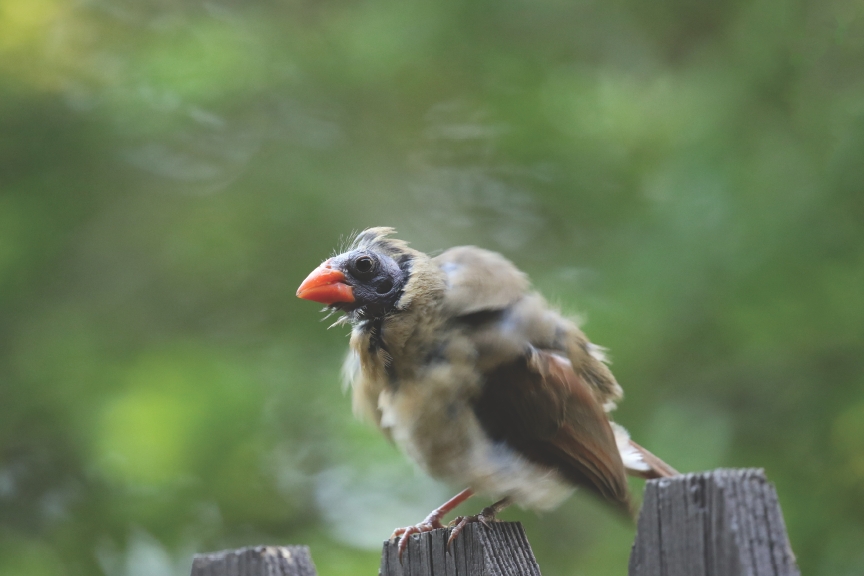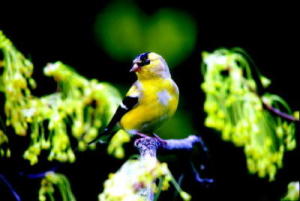Here at Wild Birds Unlimited in Grosse Pointe Woods we have had customers reporting that their finches are beginning to lose their bright summer plumage. Molting is the process by which a bird replaces its feathers.
In preparation for winter weather, birds in this area grow a fuller body of feathers and consume bird food that is higher in fat and protein to accomplish this feat.
When a bird replaces all of the feathers on its body, it is described as a full molt. A partial molt may occur between full molts for some species of birds as they replace only a portion of their feathers. An example of a partial molt is when American Goldfinches obtain their bright breeding plumage by replacing only their body feathers each spring (see picture). Their body plumage, flight and tail feathers are all replaced during a full molt each fall.
Every molting bird needs extra proteins to grow strong feathers for proper flight and effective insulation against the elements of cold and wind. Feathers are over 90% protein, primarily keratins. A bird’s feathers contain 25% of the total protein found within its entire body. The main ingredients a bird needs to consume when growing feathers are amino acids (protein) and lipids (fats). Birds will eat more of their daily diets and seek out bird food high in protein and fat to satisfy both the extra energy requirements and the needed building blocks.
As I look at the birds in my Michigan yard, I am reminded of the molting process when watching the Downy Woodpeckers. They seem to be at the Bark Butter feeder constantly, the male, female and young taking turns. The adults have plumage that looks older, grayer and definitely worn from all of their trips into the nest cavity. The constant in and out against the edge of the entrance hole as they carried insects for the babies has taken its’ toll. No wonder they are so attracted to the blend of peanuts and beef fat, both very high in fat and protein.
When you offer bird foods that will satisfy their molting needs, you will be reward you with longer views of them at the feeders. Sunflowers out of the shell as well as shelled peanuts provide birds with quick energy as well as protein and fat. Beef fat in the form of our premium Wild Birds Unlimited suet and Bark Butter are great for insect eating birds including woodpeckers, Black-capped Chickadees, Red-breasted and White-breasted Nuthatches and Carolina Wrens. Mealworms are another great way to help your molting birds. The Cardinal pair and Chickadees practically line up when they see me heading out to the mealworm feeder.

female Northern Cardinal molting
A diet low in protein or fats can cause improperly colored or formed feathers. Duller colored birds may have trouble attracting a mate. Defective, frayed or curved feathers could seriously hinder birds’ flying or insulation abilities.
When feeding the wild birds in your yard, consider adding some fat and protein to the menu – for the wild birds, that is! Then, feel good about the part you played in helping them create those colorful, sturdy feathers that will serve them well through the season.
Enjoy your wild birds!
Rosann
Wild Birds Unlimited of Grosse Pointe Woods, MI
Rosann@wildbirdsgpw.com
Have you joined our email list? Click here to sign up, it’s free and gives you access to sales, coupons, nature news, events, and more!

